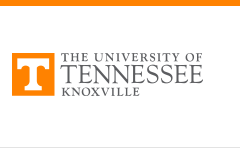
Masters Theses
Date of Award
5-2001
Degree Type
Thesis
Degree Name
Master of Science
Major
Chemical Engineering
Major Professor
Robert M. Counce
Committee Members
John Collier, David DePaoli, Robert Jubin
Abstract
Existing oil wells generate a substantial amount of water in the production stream. To make production more efficient, the Oak Ridge National Laboratory is developing a centrifugal separator unit to separate the oil and water in these streams. Although the unit effectively separates the oil and water, it cannot tolerate solids, such as sand. Therefore, this research employs a hydroclone to remove these solids from the production stream, thus, protecting the centrifugal separator from mechanical failure. Feeds that ranged from 90% oil to 10% oil, with the remainder water, were used in this research. Solids were also added to the feed in an amount equal to 3% by mass. The two streams exiting the hydroclone were analyzed for oil content, water content, and solids content. The goal of the research is to remove all of the sand in the underflow (flow out of the bottom of the hydroclone) with a limited amount of water. All of the oil and most of the water are desired to be in the overflow (flow out of the top of the hydroclone). This is a specific operating condition that is needed to use the hydroclone in series with a centrifugal separator in the downhole environment of an oil well. The data obtained from this research indicates that the solids can be almost completely removed at all feed conditions. Operating conditions did not affect the solids separation to any great degree. The separation of the oil and water was more difficult. In the predominately water feeds, nearly all of the oil could be removed. In feeds that were predominately oil, there was significant carryover of oil into the water stream. This was shown to be a function of the operating conditions (the flow rates of streams exiting the hydroclone). It appears that the desired liquid and solid separation can be obtained at high water contents in the feed, but that the desired liquid separation is not obtained at high oil concentrations.
Recommended Citation
Perkins, Larry Willis, "Oil/water/solids separations using a hydroclone. " Master's Thesis, University of Tennessee, 2001.
https://trace.tennessee.edu/utk_gradthes/9708

